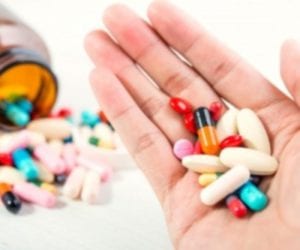Getting Help for Prescription Drug Addiction

Addiction to prescription drugs in America is a growing problem and cause for concern. Over 50 million people over the age of twelve have used prescription medications at least once in their lifetime. Prescription narcotics are causing mayhem in the lives of the people who abuse them, and opioid painkillers are causing the death of approximately 45 people per day. Opioid prescription drug abuse causes more deaths than cocaine and heroin abuse combined. The number of people in treatment programs for prescription drug abuse is also growing at an alarming rate. The National Survey on Drug Use and Health reports that the highest rates of abuse are in the western states of America, notably Nevada, New Mexico, Oregon, Washington, Arizona, Idaho and Colorado. The top prescription drugs used by teenagers are Vicodin, Adderall, Ritalin, tranquilizers, OxyContin and cold medications which are easily accessible over the counter.
Addiction to prescription drugs begins when they are abused and the body begins to build up a tolerance to the drug. Tolerance requires that the user must take more of the drug to achieve the same drug effects as before. This leads to an increase in doses and timing, as the user tries to avoid coming down from the high and experiencing withdrawal from the drug. There are signs and symptoms to prescription drug addiction that people should be aware of. Getting help for prescription drug addiction can be the difference between a life of dependence and a life of lasting sobriety.
Signs of Addiction
Opioid prescription drugs will create a depression of the central nervous system and cause sedation and drowsiness. Signs of opioid drug abuse include: slurred speech, clammy skin, low blood pressure, stupor, pinpoint pupils, nausea, vomiting, itching, flushing, constipation, stomach problems, constricted blood vessels, increased heart rate, over arousal, high energy, hyper vigilance, sleep problems, coma and slow or arrested breathing. The psychological signs of opioid abuse include: anxiety, euphoria, psychosis, low motivation, irritability and depression. The behavioral signs of opioid abuse: include using the drug more often or at higher doses, social isolation and abandonment of responsibilities and not being able to stop taking the drug. The addict will also spend more time obtaining, using and recovering from the drug. If someone is overdosing on opioid drugs they will need immediate medical attention. The drug Naloxone is a reversal agent that can save the life of someone who is overdosing on opioids by reversing the effects of the drug.
Cold medications for recreational use are very popular among young people. When these medications are abused they adversely affect the brain because they contain psychoactive ingredients. Cough medications contain dextromethorphan (DXM) which causes feelings of euphoria and out-of-body effects when they are abused. Promethazine-codeine cough syrup contains codeine which is an opioid drug.
When stimulants like Ritalin and Adderall are abused they will cause paranoia and a dangerous increase in body temperature and heart beat. Abuse of depressant medications will cause shallow breathing, disorientation, slurred speech, drowsiness and lack of coordination. The addict may also experience seizures, overdose and death when the drug is suddenly stopped or mixed with alcohol.
Recovery
Addiction to prescription drugs is difficult to stop alone and the addict will need the help of medical professionals. Physical dependence on prescription drugs is a chronic medical condition. Breaking free is a process that requires a professional detox, counseling and often medications like Buprenorphine and Naloxone. Therapies like 12-step programs and methadone treatment are also helping addicts recover.
Prescription drug addiction alters the functioning of the reward center of the brain. Once the drug is stopped withdrawal symptoms will begin, such as: drug craving, diarrhea, nausea, vomiting, body aches, chills, fatigue, agitation, mood swings and more. Opioid withdrawal can last for hours to several weeks depending on the severity of the addiction. Medications are often given to prevent the unpleasant effects of withdrawal during detox. Methadone is a long-acting opioid drug that effectively eliminates withdrawal symptoms. Once the patient is free from prescription drugs they will also be tapered off of the Methadone. Buprenorphine and Naloxone also prevent withdrawal symptoms and reduce drug cravings. Clonidine is another medication that reduces the over-active “fight or flight” response during withdrawal.
If you or a loved one needs help with abuse and/or treatment, please call the WhiteSands Treatment at (877) 855-3470. Our addiction specialists can assess your recovery needs and help you get the addiction treatment that provides the best chance for your long-term recovery.
